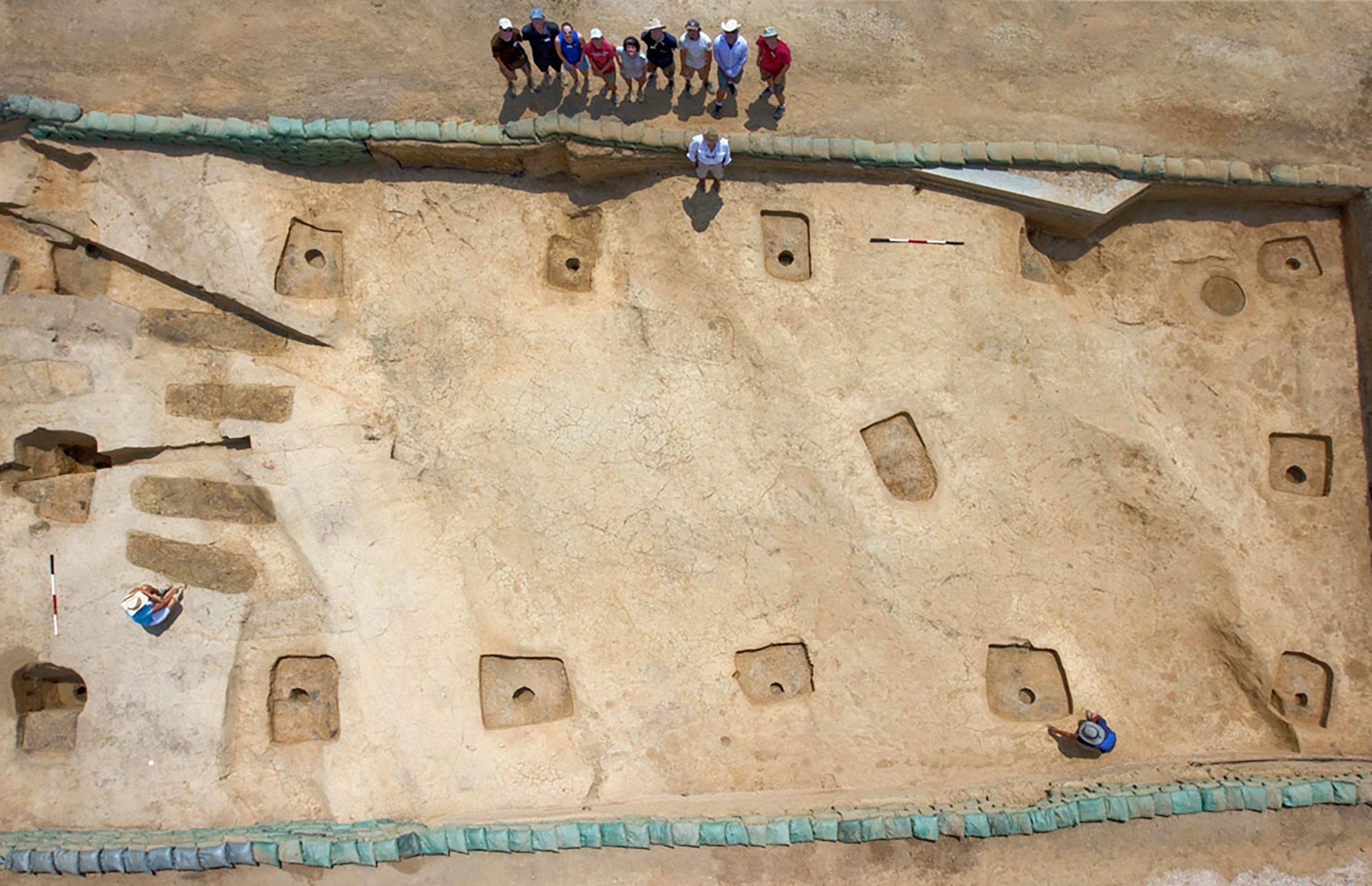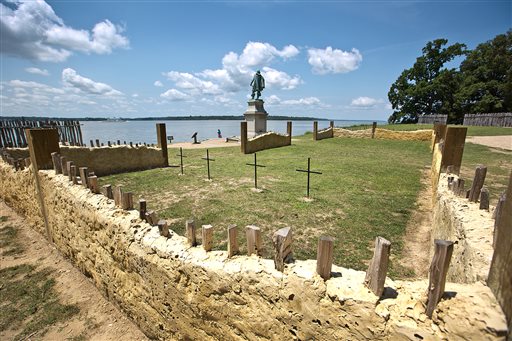Unearthing the Secrets of Jamestown’s 1608 Church: DNA Study Reveals High-Status Colonists and a Hidden Scandal
Jamestown, Virginia, founded in 1607, holds a prominent place in history as the first permanent English settlement in the New World. Over the centuries, this site has yielded a wealth of archaeological discoveries, offering insights into the lives of early colonists. However, one of the most intriguing breakthroughs came with the excavation of a 17th-century church, revealing human remains buried in its chancel—a location reserved for high-status individuals. A recent ancient DNA (aDNA) study has not only identified two of these settlers but has also unearthed a family secret that had been buried for over 400 years.
Discovery at the 1608 Church
The remains in question were found in graves near the altar of Jamestown’s 1608–1616 church. This discovery immediately suggested that the individuals were of significant social standing. According to Dr. William Kelso, Emeritus Director of Archaeology at Jamestown Rediscovery, “These graves were purposely buried near the altar in the church chancel. This prominent location suggests the graves contained the remains of high-status individuals.”
For years, speculation surrounded the identity of those buried there. Were they some of Jamestown’s founders? Military leaders? Clergy? To answer these questions, geneticists from the Reich Lab at Harvard University conducted a groundbreaking aDNA analysis on two of the individuals. Their findings, published in the journal Antiquity, would shed light on their identities and unravel a long-forgotten family drama.
Cutting-Edge DNA Analysis
Despite the challenging conditions of DNA preservation in Jamestown’s humid climate, researchers successfully extracted genetic material from the skeletal remains. The two individuals, designated JR2992C and JR170C, were analyzed for mitochondrial DNA, which is inherited maternally. Their genetic profiles revealed broadly Western European ancestry, consistent with the origins of early English settlers.
Comparing this genetic data with historical records, osteological evidence, and burial context, researchers identified the men as Sir Ferdinando Wenman and Captain William West. Both were members of the influential West family, which included Thomas West, Third Baron De La Warr, the colony’s first governor and namesake of Delaware.
A Scandal Hidden in the Genes
The study’s most surprising finding was the maternal relationship between the two men, as revealed by their shared mitochondrial haplogroup. This prompted researchers to delve deeper into historical documents, uncovering a court case involving Captain West’s estate after his untimely death in 1610. The case hinted at a scandalous secret: Captain West was likely the illegitimate son of Thomas’ aunt, Elizabeth West.
Elizabeth West, who never married, had a son out of wedlock—a major taboo in 17th-century England, especially within high-status families. Such cases were often omitted from official records, as was the case here. The court case and genetic evidence together provided compelling proof of Captain West’s illegitimacy, rewriting a chapter of the West family’s history.
Implications for Archaeology and History
This revelation marked the first time aDNA was used to establish a case of historical illegitimacy in a prominent family from the 17th century. Co-author Karin Bruwelheide from the Smithsonian Institution emphasized the significance of this breakthrough: “This study demonstrates the utility of combining genetic, archaeological, and historical approaches to the study of the past.”
The combination of genetic analysis and meticulous historical research not only identified the individuals but also provided a deeper understanding of the social dynamics and personal stories of Jamestown’s elite. It highlighted the potential of archaeogenomics to uncover hidden truths, even centuries later.
The Lives of Sir Ferdinando Wenman and Captain William West
Sir Ferdinando Wenman, born in 1576, hailed from a distinguished family in England. He joined the Jamestown settlement to support its early development but died in 1610, likely from illness. His burial in the church chancel underscores his high status and contributions to the fledgling colony.
Captain William West, born around 1586, also played a significant role in the settlement. A brave military leader, he was killed in a skirmish with Indigenous forces in 1610. His death was a significant loss for the colony, and his burial near the altar reflects the respect he commanded among his peers.
Both men’s lives were intertwined not only by their contributions to Jamestown but also by their shared family lineage. The discovery of their relationship adds a human dimension to the historical narrative, reminding us of the complexities and personal dramas that shaped the lives of early settlers.
Advancing the Field of Archaeogenomics
The success of this study opens new doors for the application of aDNA in historical archaeology. While poor DNA preservation has long been a challenge in similar contexts, this research demonstrates that even limited genetic material can yield significant insights when combined with other evidence. As co-author Dr. Éadaoin Harney from Harvard University noted, “Despite the poor DNA preservation of the two individuals, their shared mitochondrial haplogroup helped to guide records-based historical research, ultimately leading to surprising insights into their relationship.”
This multidisciplinary approach sets a precedent for future investigations at colonial sites and beyond. By integrating genetic analysis with archaeological and historical methods, researchers can reconstruct detailed biographies of individuals, uncovering stories that might otherwise remain untold.
The Legacy of Jamestown’s Church Excavations
The excavation of the 1608–1616 church at Jamestown has significantly enriched our understanding of the settlement’s early years. The discovery of high-status burials in the chancel highlights the social hierarchies that existed within the colony. It also underscores the importance of religion in the lives of the settlers, with the church serving as both a spiritual and social center.
The identification of Sir Ferdinando Wenman and Captain William West adds a new layer to this narrative, connecting the archaeological site to specific individuals and their stories. Their remains, along with the artifacts found in their graves, provide a tangible link to Jamestown’s past, offering a glimpse into the lives of those who shaped its history.
Broader Implications
The findings from Jamestown have implications that extend far beyond the site itself. They demonstrate the power of interdisciplinary research to uncover new dimensions of history. By combining genetic data with historical records, researchers can challenge established narratives and reveal the complexities of the past.
This study also highlights the potential of archaeogenomics to address broader questions about identity, lineage, and social dynamics. As techniques for DNA extraction and analysis continue to improve, the possibilities for uncovering hidden histories are virtually limitless.
Conclusion
The excavation of Jamestown’s 1608 church and the subsequent aDNA analysis have provided groundbreaking insights into the lives of two high-status colonists. Through the identification of Sir Ferdinando Wenman and Captain William West, researchers have not only solved a centuries-old mystery but also uncovered a hidden scandal that reshapes our understanding of the West family and their role in Jamestown’s history.
This remarkable study underscores the potential of combining genetic, archaeological, and historical approaches to illuminate the past. It serves as a testament to the enduring value of interdisciplinary research in uncovering the stories of those who came before us. As we continue to explore sites like Jamestown, we can look forward to more discoveries that connect us to our shared history and deepen our understanding of the human experience.










0 commentaires: